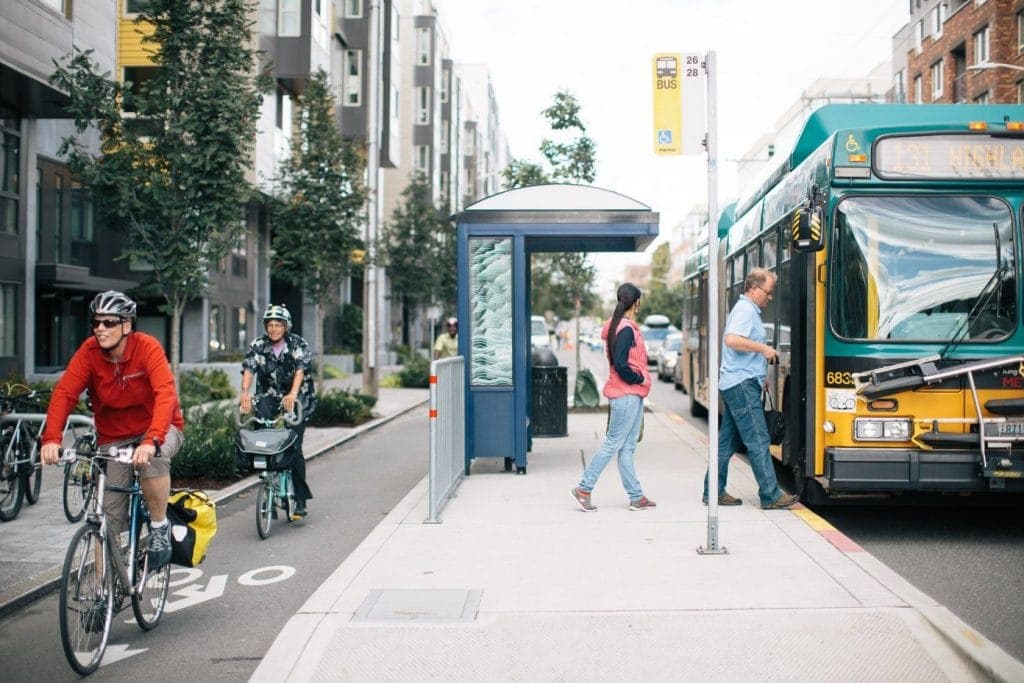
Resource
Evaluating Complete Streets Projects: A guide for practitioners
Evaluating Complete Streets Projects: A guide for practitioners
Across the country, government agencies are working to meet residents’ demands to be more responsive, transparent, and accountable in decisions and investments. Transportation agencies are not exempt from this call—and they face the additional challenges of dwindling capital and maintenance budgets. Performance measures, in the broad sense, provide a quantitative and, sometimes, qualitative indicator of potential or actual performance of a specific street, a corridor, or of the whole transportation network.
Performance measures are not new, but they have typically been used to review system-level outcomes specific to motor vehicles, such as pavement quality, congestion, and injurious crashes. Over the last decade, the National Complete Streets Coalition has promoted the use of performance measures that better reflect multimodal needs and that are relevant to individuals using the system. Expanding the range of performance measures and deploying them to understand individual projects allows transportation agencies to clearly connect investments to community goals. Ultimately, communicating how projects perform can bolster support among residents and elected officials for continued investment in Complete Streets efforts.
Performance measurement includes establishing performance targets, modeling impacts, and monitoring results. This document focuses on the final step: evaluating the results of projects. While some agencies have done multimodal analyses before and after completing a project, they are in limited company. But measuring conditions before a project and comparing the post-construction environment to that baseline can be the most valuable aspect of performance measurement. For elected leaders and residents, before-and-after analyses demonstrate how well a project achieved its intended goals. For transportation planners and engineers, measuring the actual results of projects allows them to make better-informed choices for future projects. The results may be rolled up into corridor- or network-wide measures that show the impact of an annual transportation budget and how a community is achieving its Complete Streets vision. This resource, meant for agencies interested in but just beginning their project evaluation efforts, intends to:
- Provide general steps to take in evaluating projects.
- Discuss useful measures for common Complete Streets goals of access, economy, environment, equity, place, public health, and safety, and the metrics that a jurisdiction may use.
- Offer a few tips for using those measures to tell the story of a project once it is completed.
- Share further resources for those ready to dive deeper into the why and how of performance measurement for Complete Streets.

© 2025 Smart Growth America. All rights reserved
Site By3Lane Marketing











